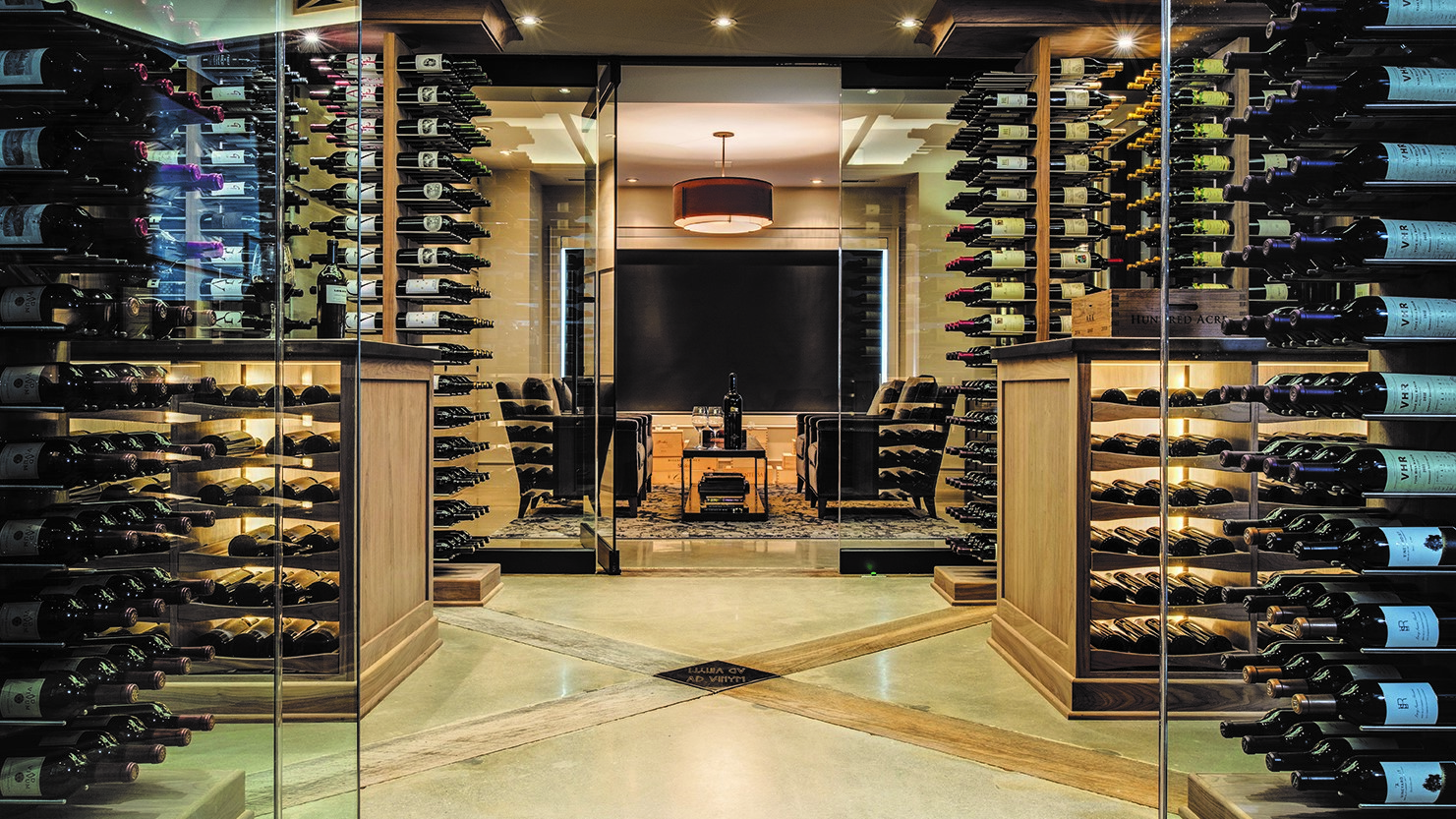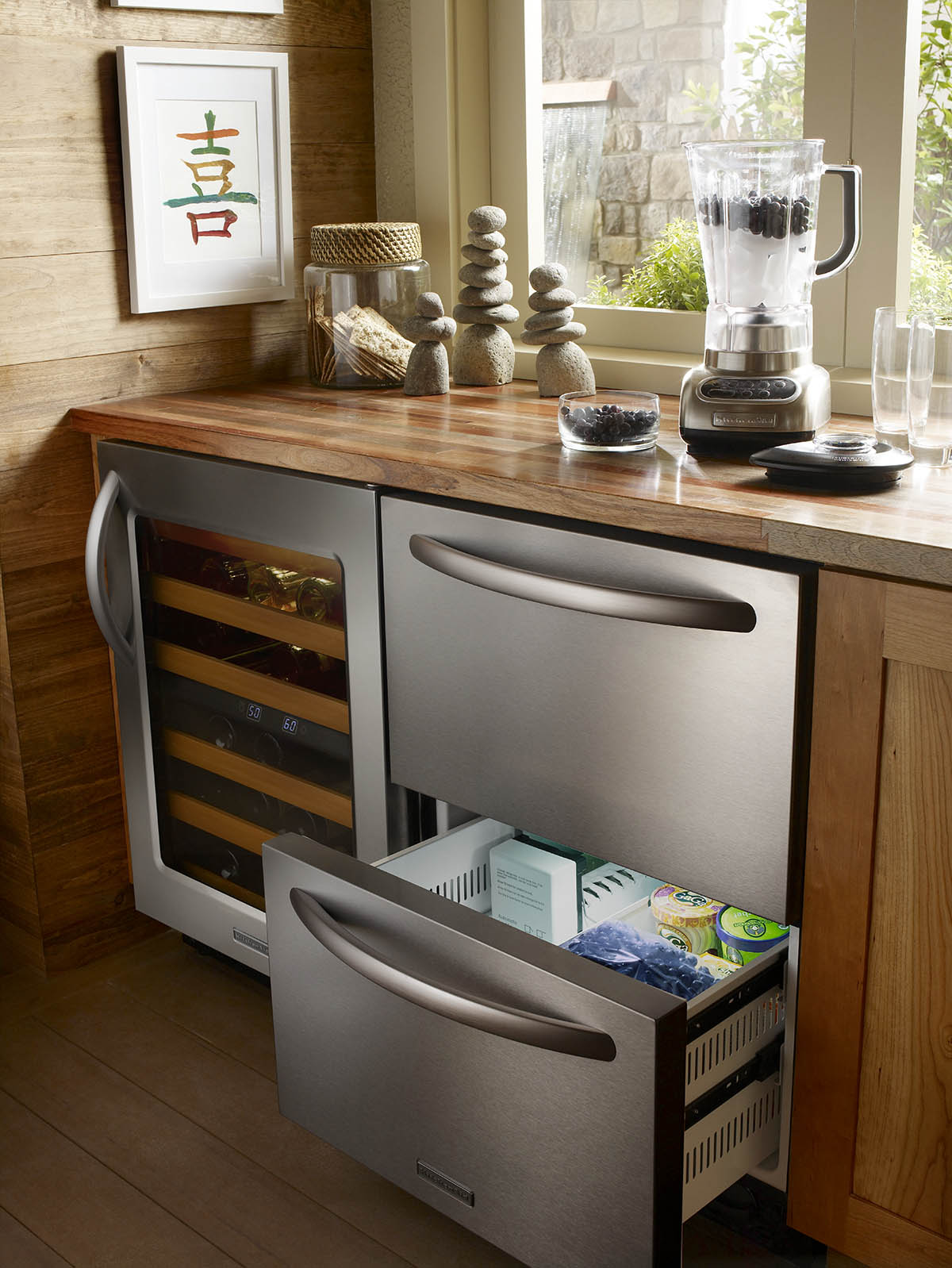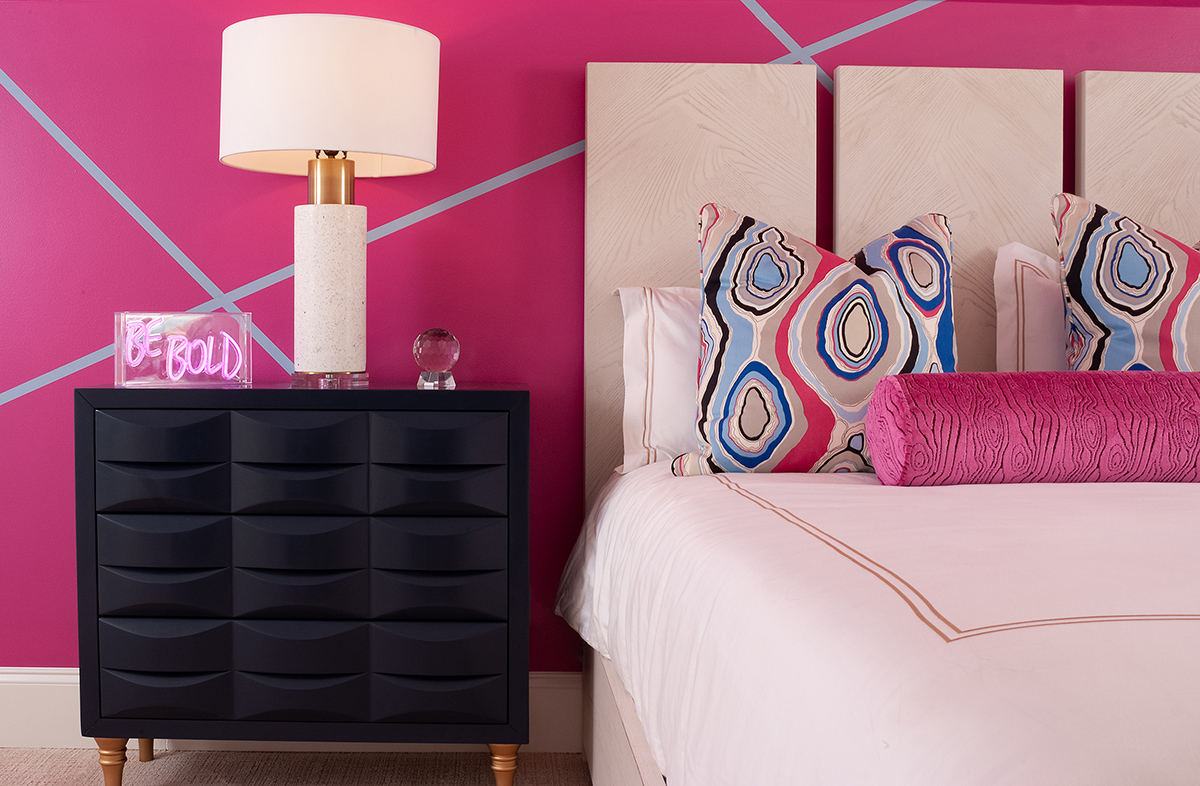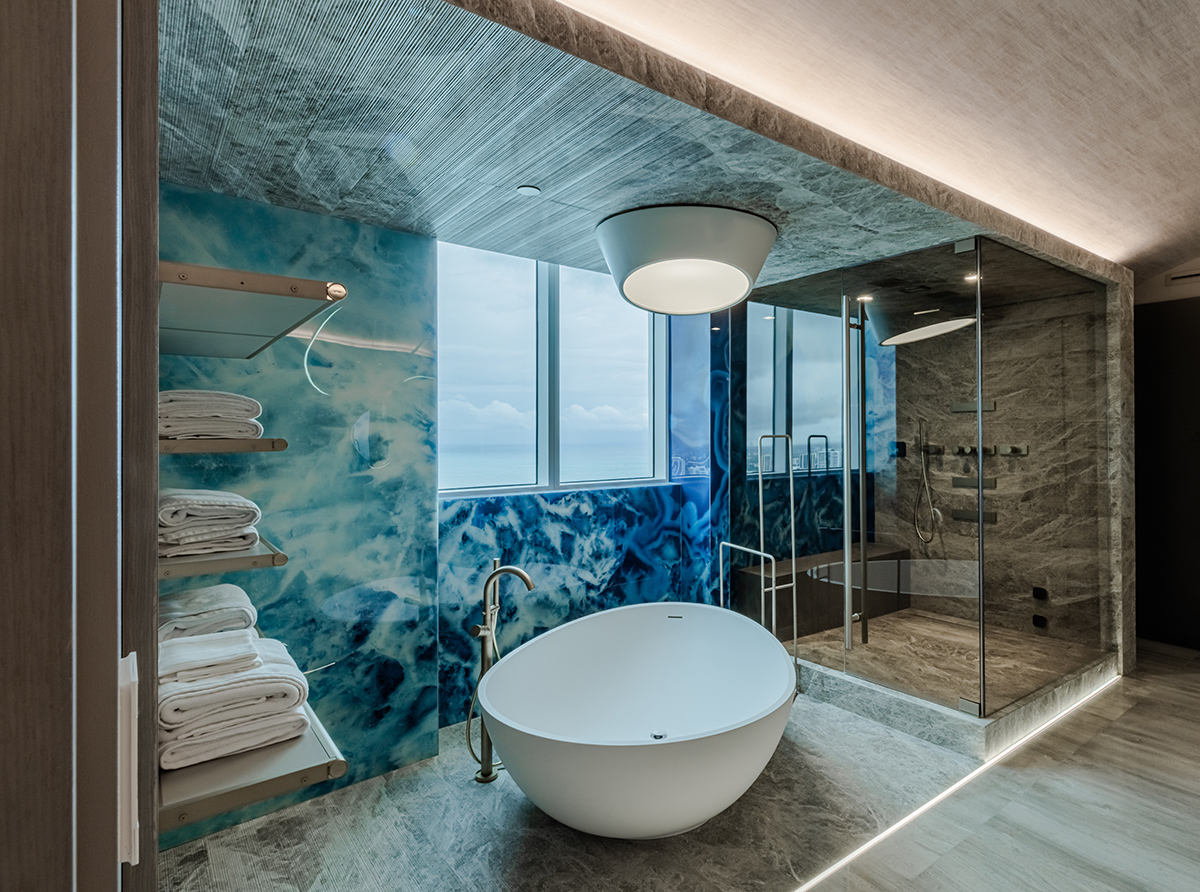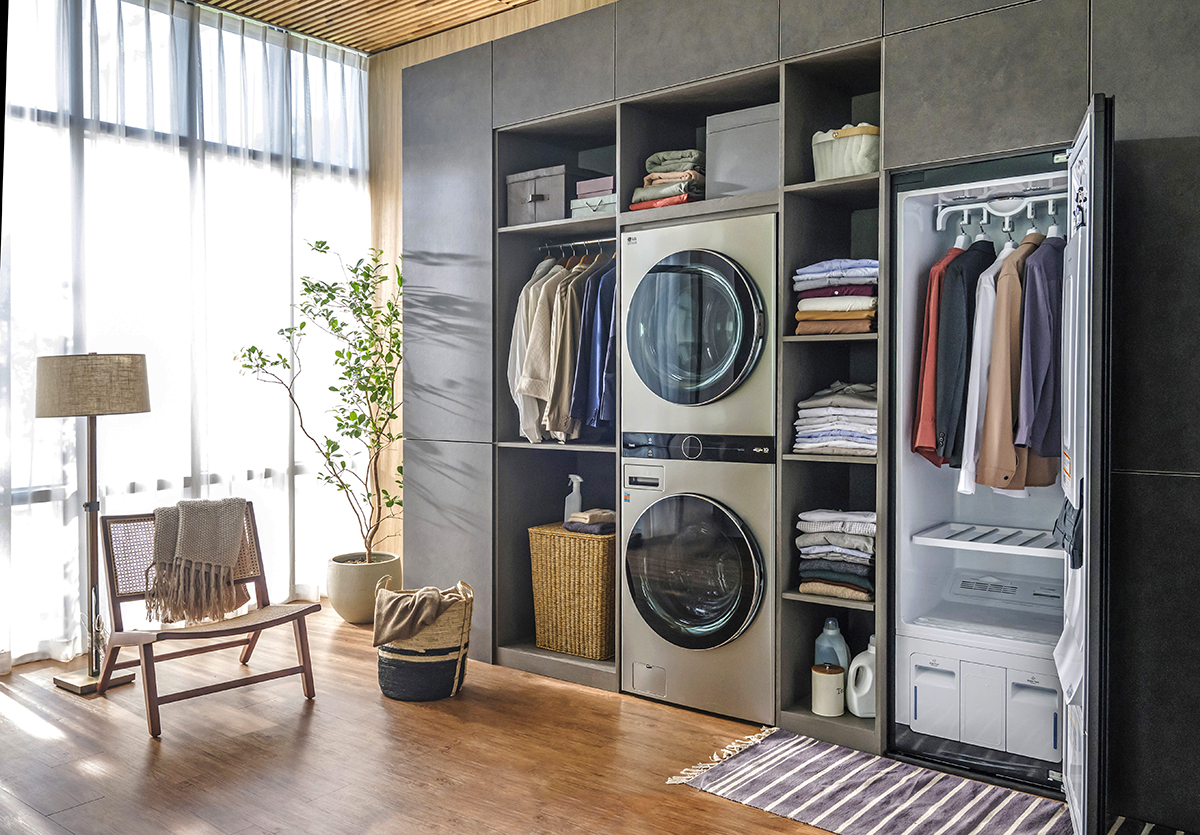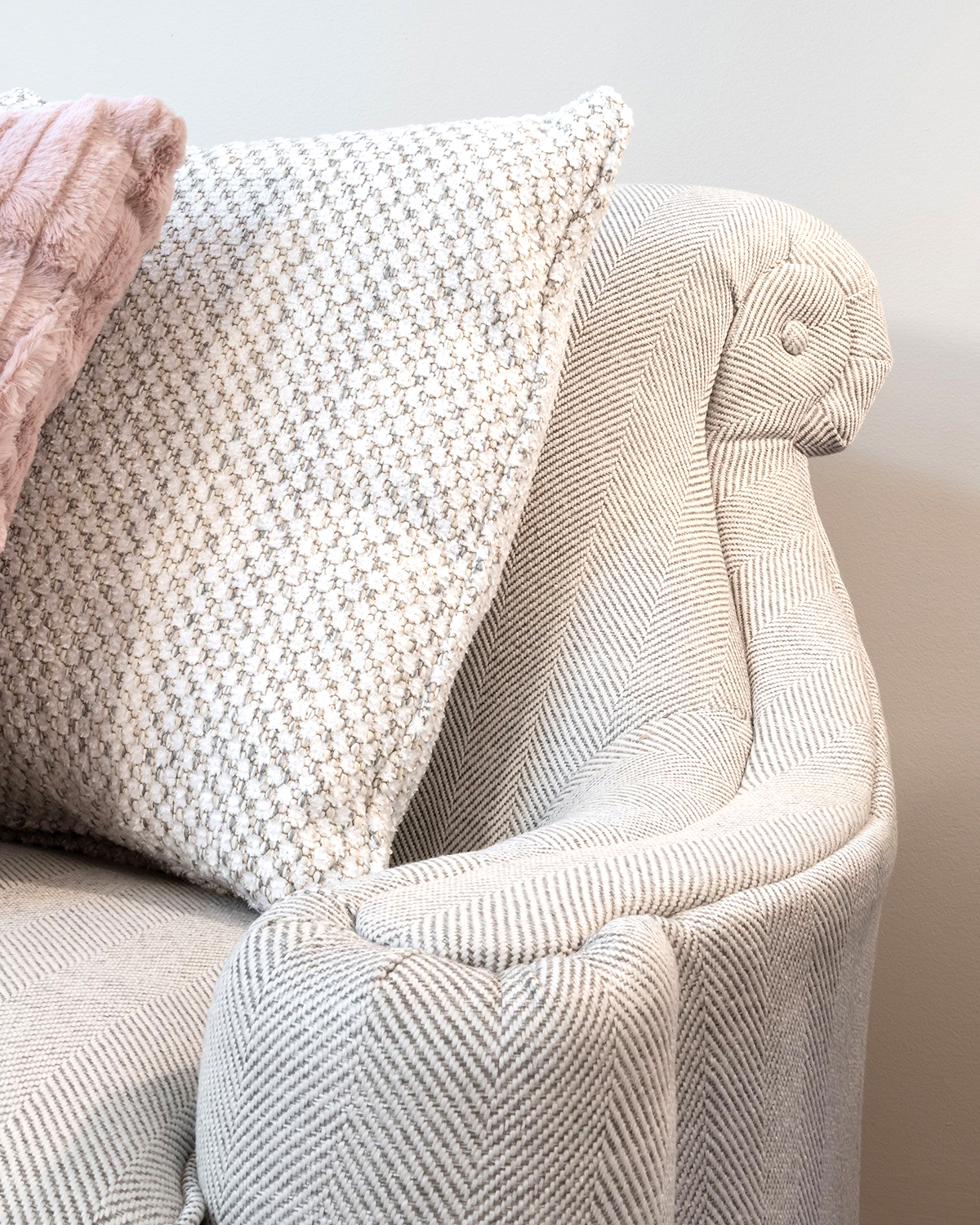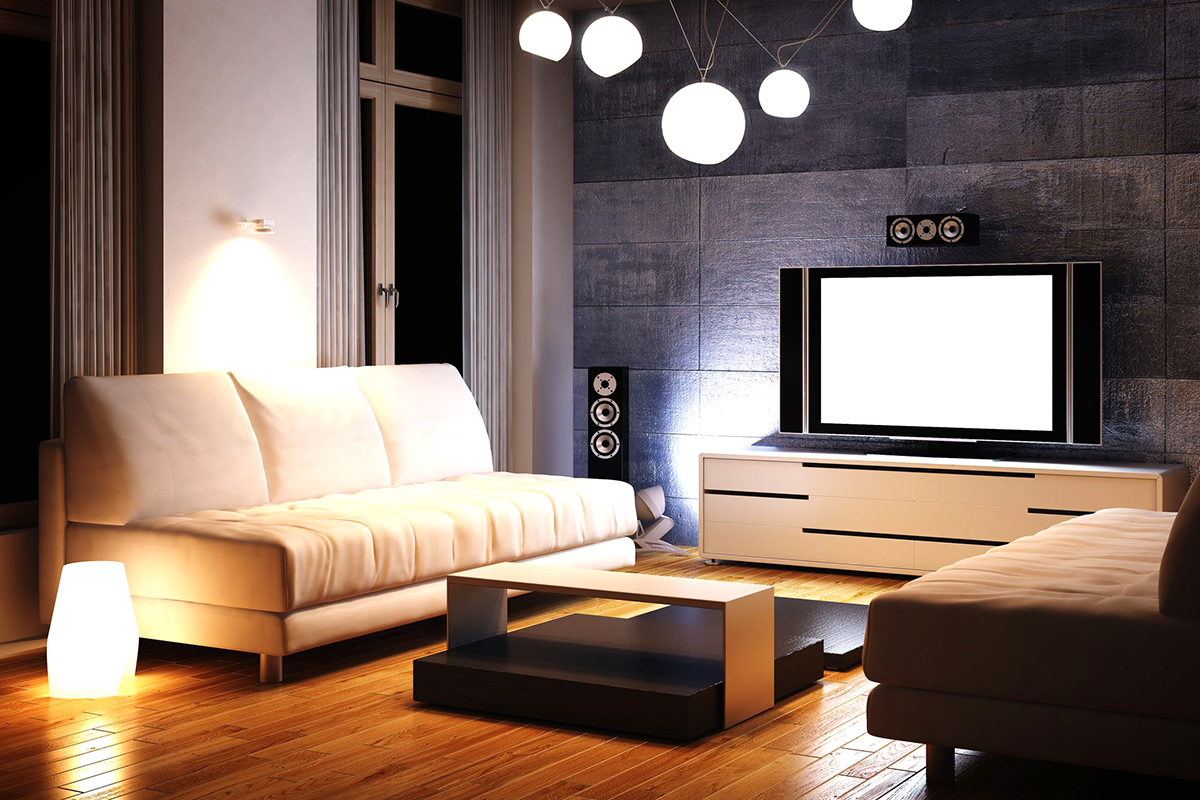WRITER | SARAH SPOHN
PHOTO | REVEL
Wine cellars have a deep-rooted history in underground caves dating as far back as 1700 B.C. in the Middle East and Europe. Today’s wine cellars are far more complex and customized due to their advanced technology and design. No more heaving open heavy wooden doors in dank, dark basements – custom wine cellars are now bright, open, modern designs that are often a focal point of the entire home’s aesthetic.
After searching for a specific wine rack design, wine enthusiast Jim Cash realized there wasn’t one with his specifications on the market, so he began to design his own. He established Revel Custom Wine Cellars in 2009, and now, seven patents later, the company designs custom wine cellars throughout the US and Puerto Rico, Europe, and Australia from its headquarters in East Lansing.
Cash spoke about the wine cellar’s transition from a hidden, dark corner of the basement to a showcase element of today’s home. “The biggest shift is that the wine cellar has become an entertainment hub, resulting in more contemporary designs and the use of glass walls and doors to provide views into the cellar. In turn, this has created strong momentum for new wine storage systems like ours that do a better job of displaying the wine.”
Today, the designs are both aesthetically pleasing and functional. In the custom design process, most consultations begin with customers describing their current wine collection and also their ideal/goal collection of the future. Some customers lead with their budget; others prefer to maximize bottle storage capacity. Still others look to create a visual piece to show friends and neighbors. According to Cash, Revel’s five-step design process aims to create a balance of these three variables: cost, capacity, and visual impact.
Revel’s custom pieces range from $20,000 to $300,000. They’re fully assembled by highly skilled artisans at Benchmark Wood Studio in Holland, from where Revel ships them in a moving truck to their new home for installation. Many wine cellars are considered to be more like high-end kitchen cabinetry, but even more complex due to their custom wiring and built-in lighting. Some designs include a floating look with acrylic racks and glass doors.
Revel’s wine wheel assemblies often weigh 300-400 pounds, are up to 10 feet tall, and include custom crown molding. In new-home installations, the pieces are essentially built-in furniture; other installations are designed to blend seamlessly according to fit specs and dimensions provided. Wine cellars are an afterthought for many homebuyers and homeowners and can readily be installed in converted rooms. “You build a wine cellar like a refrigerator,” Cash said. “It has to have a good door with a good seal, needs to insulate all around – floors, ceiling, walls – and you need a moisture barrier to maintain the proper humidity and a cooling system to keep the room cool.”
Just as design elements have moved away from outdated heavy woods, stone, or brick to contemporary steel and acrylics, today’s customer is modernized, too. Wine cellars used to be the man’s domain, but Cash said that couples are more often designing them together and, frequently, it’s a woman driving the style of the cellar.
Though design options for wine cellars seem endless, the one commonality is simple: At the heart of it, you have to have a love for wine.


